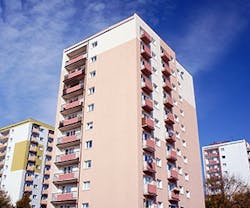Preventing Fires in Off-Campus Housing
According to National Fire Protection Association’s (NFPA) latest report, Structure Fires in Dormitories, Fraternities, Sororities and Barracks, between 2011 and 2015, U.S. fire departments responded to an estimated yearly average of 4,100 structure fires in dormitories, fraternities, sororities and other related properties.
NFPA tips to prevent fires in dorms, fraternities, sororities and apartments:
- Look for fully sprinklered housing when choosing a dorm or off-campus housing.
- Test all smoke alarms at least monthly.
- Never remove batteries or disable the alarm.
- Check with your local fire department for any restrictions before using a barbeque grill, fire pit, or chimney.
- Cook only when you are alert, not sleepy or drowsy from medicine or alcohol.
Approximately seven in 10 (72%) of fires in these properties began in the kitchen or cooking area, accounting for 44% of civilian injuries.
“It’s important they review fire safety tips to learn how to prevent fires, check smoke alarms and prepare escape plans,” says Lorraine Carli, vice president of Outreach and Advocacy for NFPA. “Staying in the kitchen when cooking, using flameless candles, and not overloading electrical outlets and power strips are all vital steps to reducing injuries and loss of life.”
From 2000 through mid-August 2017, The Center states that 128 students died in 91 fires on college campuses, in Greek housing, or in privately owned off-campus housing within three miles of the campus. Out of the 91 fires, 78 of them occurred in off-campus housing.
Highlights from the NFPA report:
- In 2011-2015, U.S. fire departments responded to an estimated annual average of 4,100 structure fires in dormitories, fraternities, sororities, and barracks.
- These fires caused annual averages of 35 civilian injuries, and $14 million in direct property damage.
- 87% of the reported structure fires involved cooking equipment. The vast majority of fires were specifically reported as contained or confined to cooking equipment.
- Structure fires in dormitories, fraternities, sororities, and barracks are more common during the evening hours between 5 p.m. and 9 p.m., and on weekends.
You can read the entire NPFA report here.
